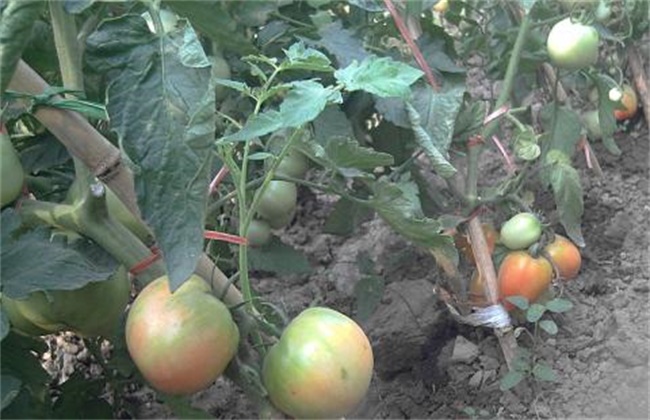Eggplant grafted rootstock varieties
Eggplant is very common in our daily life, and its planting area is also very large. When planting eggplant, because the disease resistance of eggplant is relatively poor, it is easy to appear various diseases that affect the growth of eggplant. So now many people will reduce the disease by grafting eggplant. However, when grafting eggplant, the choice of rootstock is very important. So the editor below brings you eggplant grafted rootstock varieties, let's have a look!

1. Red eggplant
Red eggplant is also known as red eggplant, flat eggplant and so on. If red eggplant is used as rootstock, then eggplant is more resistant to Fusarium wilt and Verticillium wilt. Red eggplant has strong root growth ability, sturdy stem and Internode compensation. Seeds are similar to pepper seeds and have higher germination percentage. In grafting, generally split grafting or miter grafting is the main. If the red eggplant is used as the rootstock, the sowing time is about a week earlier than the scion. Red eggplant is generally used as a rootstock in places where the disease is lighter. If there are serious soil-borne diseases, then red eggplant can not be used.
2. Prickly eggplant
Solanum nigrum is originally a kind of wild Solanaceae plant, which has many thorns on its stems and leaves, so it is named Solanum nigrum. Spiny eggplant is mainly used for high resistance to Verticillium wilt and is very common in the north. The 1000-seed weight of Solanum nigrum seed is about 2g, the seed color is mainly black-red, and its germination rate is relatively high. After soaking the seeds for one day, all the seeds can germinate in about ten days. However, in its seedling stage, although cataplexy is rare, it is prone to blight. Spiny eggplant has strong resistance to low temperature, so it is suitable to be used in autumn. If you encounter a high-temperature and high-humidity environment at the seedling stage, you should do a good job of controlling water and squatting seedlings to avoid overgrowth.
3. Thorubam
Torubam is a variety of eggplant originating in Japan. This kind of eggplant rootstock has high resistance and even direct immunity to four kinds of soil-borne diseases such as bacterial wilt and root-knot nematode. Tolubam's root system is very developed, and the plant growth is also very strong, long internodes. But Thorubam's germination rate is relatively low, under normal circumstances is not easy to germinate. It needs to be soaked with gibberellin for 1-2 days, and then do a good job of changing temperature to accelerate budding, and the seedlings can emerge only after a week or so. But after emergence, its growth ability is strong, the quality of eggplant fruit is good and the commodity value is high, and the yield is also very considerable.
4. Totos plus eggplant
Totos plus eggplant is a new grafted eggplant variety introduced from the United States in China. It is strong in nature, easy to germinate, and can be immune to all kinds of soil-borne diseases. For example, common verticillium wilt, bacterial wilt and so on. The growth is also very strong, if you use this variety as a rootstock, then its fruiting period can be extended by about a month. As a result, the yield can be doubled, and the quality of eggplant fruit will not be affected.
The above is a brief introduction of eggplant grafted rootstock varieties. That's all for today's introduction. This article is for reference only. I hope it can be helpful to everyone.
Related
- Where is it suitable to grow horseradish in China? it is expected to see the middle altitude horseradish in Alishan.
- How to prevent tomato virus disease reasonably? (Control methods included)
- Many people like to plant towel gourd on the balcony. What are the main points of this method and management?
- What crops can chili peppers be mixed with?
- Fertilization techniques and matters needing attention in Tomato
- What are the grafting techniques for peach seedlings in spring?
- Harm and control methods of root swelling disease of Chinese cabbage
- What are the pests of sweet potatoes? How to prevent and cure it?
- Symptoms, causes and Control methods of navel Rot in Tomato
- The cause of "Cucumber rotten bibcock" in Farmers' planting Cucumber and its Control Plan



